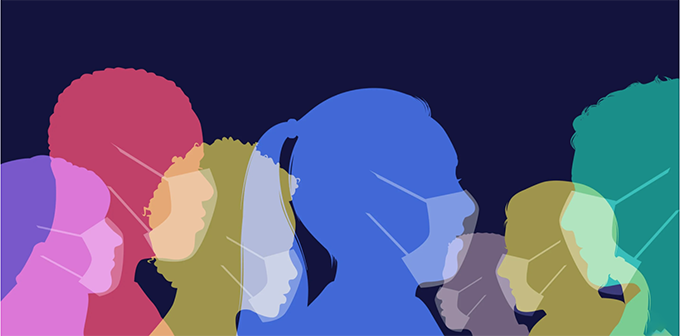
The unprecedented health crisis we are facing will have a singular impact on the class, with the widespread introduction of masks. Hiding the face of teachers and their students is likely to be a major factor of instability in the didactic relationship. It is necessary to be aware of this to anticipate the difficulties that all will face when the establishments reopen.
Indeed, the visual perception of the information which takes shape on the face of the one who utters the word and the one or the one who receives it, as well as their processing, are determining processes for the comprehension and the memorization of the exchanged sentences. and the course in general. These stages influence all the parameters of the teaching relationship.
Between emotions and prosody
The face transmits information of several natures. These are primarily emotional in nature. An essential exchange for establishing a relationship of empathy between teachers and students. It is the reading of these emotions that allows the creation of emotional security conditions favorable to learning.
In addition, there are elements of a kinesic nature, whether accompanied by an interrogation with a movement of the head or by a mimicry underlining an agreement, a connection which provides additional information.
In addition, elements of an articulatory nature of a more strictly linguistic nature – the tightening of the lips, their rounding, the spacing of the jaws – are additional information useful for language comprehension. These are generally more relevant elements when learning a foreign language, but just as useful for the perception of all types of messages. You only have to observe the looks of people attending a conference, carefully scrutinizing the face of the speaker, to be convinced.
Finally, it is not the face that information of a prosodic or “musical” nature of a macrokinesic nature passes, very closely linked to the overall body movements, and to vocal micro-kinesis.
Hiding the face will result in stripping the message of information elements which are all, in their interweaving with each other, essential for a global perception of the message, from the conditions of its enunciation to the emotions attached to it. It is therefore a major challenge that teachers and students will face.
Bodily commitment
It is by masking the face that some people will become aware of the extent to which the oral is conditioned by a global bodily commitment, in which the face plays a central role. What is left for teachers who are forced to wear a mask? Gestures, voice, look.
The teachers will have to amplify the movements of the body towards the pupils, while respecting the fateful meter of health distancing! They will have to play, mimic, even more than before, the content of their course, convey everything that can be through the movements of the body, literally carry the message with gestures and attitudes, since the facial expressions will be obscured .

The gestures that accompany the voice will be more decisive than before to transmit a message
It will then be essential to strengthen the connection by looking with each of his students, as well as with the whole class. We must be aware of the visual scanning strategies of the group as a whole, without forgetting to fix each of the lessons taught, so as to relate it both to the group and to what is stated.
There remains the use of the voice, in the most appropriate way possible. Since the mask distorts or filters, we advise teachers to take care to articulate well, without forgetting that some students, more visual than others, will be strongly disturbed by the fact of not being able to hold on to the facial expressions of the teacher .
It is a question of modulating the melody, the intonations, exaggerating in certain cases, so that the message remains alive, and is even even more alive than usual, because of this new situation. However, be careful to control your vocal cords, not to attack them by speaking even louder than normal: masked faces can lead to wanting to compensate with too much vocal intensity which can cause damage.
The harmonization of the movements of the body with the gaze as well as the variations in intonation and rhythm, and the accentuation of their cohesion with the content of the message, are all essential factors to grasp this new constraint, in societies in which the face is traditionally presented without any physical obstacle to the gaze.
Inventing a new way of communicating in the classroom, but also of teaching and learning, with masked faces, is a real challenge for everyone!
Author Bio: Laura Abou Haidar is a Teacher-researcher at the University of Grenoble Alpes
